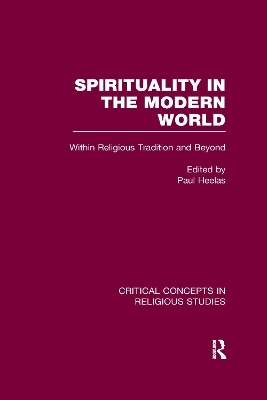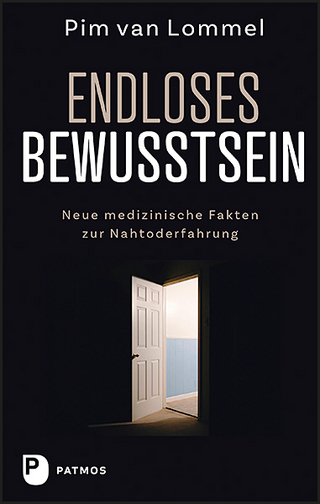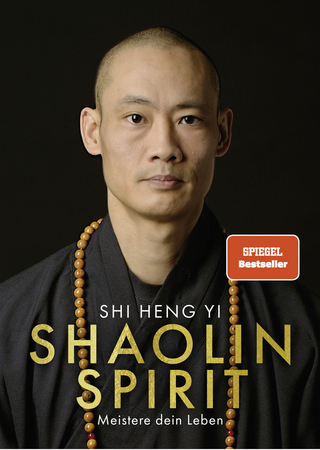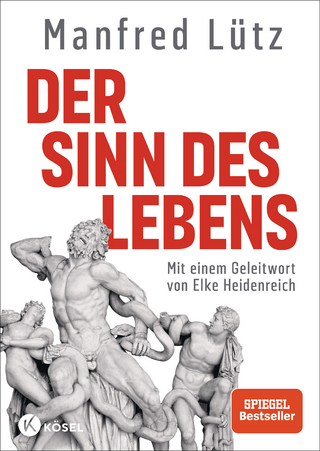
Spirituality in the Modern World
Routledge (Verlag)
978-0-415-49029-0 (ISBN)
This new four-volume Major Work from Routledge provides a coherent compilation of landmark texts which cannot be ignored by those intent on making sense of what is happening to the sacred as spirituality - more exactly what is taken to be spirituality - develops as an increasingly important lingua franca, series of practices, and as a humanistic ethicality.
Volume I: Overview—‘Zoning’ Spirituality
Part 1: On Formulating Zones
(a) Perennial Spirituality Predominantly Within Religious Tradition
1. Aldous Huxley, The Perennial Philosophy: An Interpretation of the Great Mystics, East and West [1945] (Perennial, 2004), pp. vii–xi.
2. Harold Bloom, ‘Enthusiasm, Gnosticism, American Orphism’ and ‘The New Age: California Orphism’, The American Religion: The Emergence of the Post-Christian Nation (Simon & Schuster, 1993), pp. 45–58, 181–8.
(b) Perennial Spirituality: Within and Beyond Religious ‘Tradition’
3. M. H. Abrams, Natural Supernaturalism: Tradition and Revolution in Romantic Literature (W. W. Norton, 1973), pp. 429–37.
4. Mark C. Taylor, Disfiguring: Art, Architecture, Religion (University of Chicago Press, 1992), pp. 18–23.
5. Georg Simmel, ‘On the Salvation of the Soul’ [1903], Georg Simmel: Essays on Religion (Yale University Press, 1997), pp. 29–35.
(c) On Differentiating Spirituality: Within and Beyond Religious Tradition
6. David M. Wulff, ‘Spirituality: A Contemporary Alternative’, Psychology of Religion (John Wiley, 1997) (extract).
7. Peter C. Hill et al., ‘Conceptualizing Religion and Spirituality: Points of Commonality, Points of Departure’, Journal of the Theory of Social Behaviour, 2000, 30, 1, 51–77.
8. Charles Taylor, ‘Religion Today’, A Secular Age (Harvard University Press, 2007), pp. 506–13.
9. Joseph B. Tamney, ‘Truth Church’, The Resilience of Conservative Religion: The Case of Popular, Conservative Protestant Congregations (Cambridge University Press, 2002), pp. 119–36, 152–6.
10. Robert C. Fuller, ‘Unchurched Spirituality: An Introduction’, Spiritual But Not Religious: Understanding Unchurched America (Oxford University Press, 2001), pp. 1–12.
11. Rodney Stark, Eva Hamberg, and Alan Miller, ‘Exploring Spirituality and Unchurched Religions in America, Sweden, and Japan’, Journal of Contemporary Religion, 2005, 20, 1, 3–23.
12. Catherine L. Albanese, ‘The Subtle Energies of Spirit: Explorations in Metaphysical and New Age Spirituality’, Journal of the American Academy of Religion, 1999, 67, 2, 305–25.
13. Paul Heelas, ‘"New Age" Spirituality as "Tradition", in Mark Cobb, Bruce Rumbold, and Christina Puchalski (eds.), Spirituality in Healthcare (Oxford University Press, 2011).
Part 2: Illustrating Diversity—Some Cultural and Practical Zones, Ontological and Non-Ontological
14. Peter H. Van Ness, ‘Spirituality and the Secular Quest’, in Van Ness (ed.), Spirituality and the Secular Quest (SCM Press, 1996), pp. 1–17.
15. Agnieszka Dyczewska, ‘Vegetarianism as an Example of Dispersed Religiosity’, Implicit Religion, 2008, 11, 2, 111–25.
16. Kate Khatib, ‘Automatic Theologies: Surrealism and the Politics of Equality’, in Hent de Vries and Lawrence E. Sullivan (eds.), Political Theologies: Religion in a Post-Secular World (Fordham University Press, 2006), pp. 617–32.
17. Mark C. Taylor ‘Terminal Faith’, in Paul Heelas, David Martin, and Paul Morris (eds.), Religion, Modernity and Postmodernity (Blackwell, 1998), pp. 36–54.
18. Stef Aupers, ‘"Where the Zeroes Meet the Ones": Exploring the Affinity between Magic and Computer Technology’, in Stef Aupers and Dick Houtman (eds.), Religions of Modernity: Relocating the Sacred to the Self and the Digital (Brill, 2010), pp. 219–38.
Part 3: On Counting Zones
19. David Hay, ‘The Spirituality of Adults in Britain: Recent Research’, Scottish Journal of Healthcare Chaplaincy, 2002, 5, 1, 4–9.
20. Paul Heelas and Dick Houtman, ‘Research Note: RAMP Findings and Making Sense of the "God Within Each Person, Rather than Out There"’, Journal of Contemporary Religion, 2009, 24, 1, 83–98.
21. Dick Houtman and Stef Aupers, ‘The Spiritual Turn and the Decline of Tradition: The Spread of Post-Christian Spirituality in 14 Western Countries, 1981–2000’, Journal for the Scientific Study of Religion, 2007, 46, 3, 305–20.
22. Sergey Flere and Andrey Kirbis, ‘New Age, Religiosity, and Traditionalism: A Cross-Cultural Comparison’, Journal for the Scientific Study of Religion, 2009, 48, 1, 161–9.
23. Dick Houtman, Paul Heelas, and Stef Aupers, ‘Christian Religiosity and New Age Spirituality: A Cross-Cultural Comparison’, Journal for the Scientific Study of Religion, 2009, 48, 1, 169–79.
24. Sergey Flere and Andrey Kirbis, ‘New Age is Not Inimical to Religion and Traditionalism’, Journal for the Scientific Study of Religion, 2009, 48, 1, 179–84.
Part 4: Changing Zones
25. Mark C. Taylor, Disfiguring: Art, Architecture, Religion (University of Chicago Press, 1992), pp. 64–6.
26. Inger Furseth, ‘From "Everything Has a Meaning" to "I Want to Believe in Something": Religious Change Between Two Generations of Women in Norway’, Social Compass, 2005, 52, 157–68.
27. Tony Glendinning and Steve Bruce, ‘New Ways of Believing or Belonging: Is Religion Giving Way to Spirituality?’, British Journal of Sociology, 2006, 57, 3, 399–414.
Volume Two: Spirituality From Within Religious Tradition
28. Walter Principe, ‘Toward Defining Spirituality’, Studies in Religion, 1983, 12, 2, 127–41.
29. Pontifical Council for Culture and Pontifical Council for Inter-Religious Dialogue, Jesus Christ, The Bearer of the Water of Life: A Christian Reflection on the ‘New Age’ (CTS Manchester, 2003), pp. 38–41.
30. Stefania Palmisano, ‘Spirituality and Catholicism: The Italian Experience’, Journal of Contemporary Religion, 2010, 25, 2, 221–41.
31. Johan Roeland and Peter Versteeg, ‘Transformations of Dutch Protestantism: The Turn to Experiential Belief’.
32. Phillip C. Lucas, ‘The New Age Movement and the Pentecostal/Charismatic Revival: Distinct Yet Parallel Phases of a Fourth Great Awakening?’, in James R. Lewis and J. Gordon Melton (eds.), Perspectives on the New Age (State University of New York Press, 1992), pp. 189–211.
33. James Davison Hunter, ‘The Self Examined’, Evangelicalism: The Coming Generation (University of Chicago Press, 1987), pp. 64–71.
34. Elizabeth Sirriyeh, ‘Sufi Thought and its Reconstruction’, in Suha Taji-Farouki and Basheer M. Nafi (eds.), Islamic Thought in the Twentieth Century (I. B. Tauris, 2004), pp. 104–27.
Part 5: Contexts of Participant-Affirmed Value
(a) World Peace
35. Ralph Pettman, ‘In Pursuit of World Peace: Modernism, Sacralism and Cosmopiety’, Global Change, Peace and Security, 2010, 22, 2, 197–212.
(b) Environmental
36. Ian Harris, ‘Buddhist Environmental Ethics and Detraditionalization: The Case of EcoBuddhism’, Religion, 1995, 25, 3, 199–211.
37. Michael S. Northcott, ‘Wilderness, Religion and Ecological Restoration in the Scottish Highlands’, Ecotheology, 2005, 10, 3, 382–99.
38. Mark I. Wallace, ‘God is Underfoot: Pneumatology after Derrida’, in John D. Caputo (ed.), The Religious (Blackwell, 2002), pp. 197–211.
(c) Growing Up
39. Barbara Wintersgill, ‘Andrew Wright’s Critical Realism, Clive Erricker’s Radical Postmodernism and Teenage Perceptions of Spirituality’, in Tore Ahlback and Bjorn Dahla (eds.), Postmodern Spirituality (Donner Institute for Research in Religious and Cultural History, 2009), pp. 259–76.
40. Richard W. Flory and Donald E. Miller ‘The Embodied Spirituality of the Post-Boomer Generations’, in Kieran Flanagan and Peter C. Jupp (eds.), A Sociology of Spirituality (Ashgate, 2007), pp. 201–18.
(d) Feminism and Gender
41. Linda Woodhead, ‘Spiritualizing the Sacred: A Critique of Feminist Theology’, Modern Theology, 1997, 13, 2, 191–212.
42. Melissa Raphael, ‘Truth in Flux: Goddess Feminism as a Late Modern Religion’, Religion, 1996, 26, 3, 199–213.
43. Donna Maeda, ‘The Other Woman: Irreducible Alterity in Feminist Thealogies’, Religion, 1997, 27, 2, 123–8.
(e) Art
44. Graham Howes, ‘From Religion to Spirituality’, The Art of the Sacred (I. B. Tauris, 2007), pp. 130–45.
(f) Business
45. Mario Fernando and Brad Jackson, ‘The Influence of Religion-Based Workplace Spirituality on Business Leaders’ Decision-Making: An Inter-faith Study’, Journal of Management & Organization, 2006, 12, 1, 23–39.
(g) Challenges to Religious Tradition from Beyond
46. Jeanne Openshaw, ‘The Web of Deceit: Challenges to Hindu and Muslim "Orthodoxies" by "Bauls" of Bengal’, Religion, 1997, 27, 4, 297–309.
Volume Three: ‘Autonomous’ Spiritualities Beyond Religious Tradition
Part 6: Illustrating the Most Distinctively Autonomous—‘New Age’
47. Stef Aupers and Dick Houtman, ‘Beyond the Spiritual Supermarket: The Social and Public Significance of New Age Spirituality’, Journal of Contemporary Religion, 2006, 21, 2, 201–22.
48. Stef Aupers, ‘"We are all Gods’: New Age in the Netherlands 1960–2000’, in Erik Sengers (ed.), The Dutch and Their Gods (Verlaren, 2005), pp. 180–201.
49. Liselotte Frisk, ‘Quantitative Studies of New Age: A Summary and Discussion’, in Daren Kemp and James R. Lewis (eds.), Handbook of New Age (Brill, 2007), pp. 103–22.
Part 7: Illustrating the Somewhat Less Autonomous
50. Boas Huss, ‘The New Age of Kabbalah: Contemporary Kabbalah, the New Age and Postmodern Spirituality’, Journal of Modern Jewish Studies, 2007, 6, 2, 107–25.
51. Patrick Haenni and Raphael Voix, ‘God by all Means … Eclectic Faith and Sufi Resurgence Among the Moroccan Bourgeoisie’, in Martin van Bruinessen and Julia Day Howell (eds.), Sufism and the ‘Modern’ in Islam (I. B. Tauris, 2007), pp. 240–56.
52. Suha Taji-Farouki, ‘The Beshara Perspective and the Teaching of Ibn "Arabi", Beshara and Ibn ‘Arabi: A Movement of Sufi Spirituality in the Modern World (Anqa Publishing, 2007), pp. 97–106.
53. Masayuki Ito, ‘New Spirituality in Contemporary Societies: A Comparative View on Japanese "Spiritual World"’, in Inken Prohl and Hartmut Zinswer (eds.), Zen, Reiki, Karate (Lit Verlag Munster, 2002), pp. 91–108.
Part 8: ‘Internal’ Dynamics, Including Ethicality
54. Steven M. Tipton, ‘Antinomian Rules: The Ethical Outlook of American Zen Students’, Getting Saved from the Sixties (University of California Press, 1984), pp. 95–155.
55. Benjamin Richard Smith, ‘Body, Mind and Spirit? Towards an Analysis of the Practice of Yoga’, Body & Society, 2007, 13, 25, 25–46.
56. Jennifer Lea, ‘Liberation or Limitation? Understanding Iyengar Yoga as a Practice of the Self’, Body & Society, 2009, 15, 71–92.
57. Luce Irigaray, ‘Eastern Teachings’, Between East and West: From Singularity to Community (Columbia University Press, 2003).
Part 9: Contexts of Perceived Value
(a) Healing
58. Maya Warrier, ‘Revisiting the "Easternisation" Thesis: The Spiritualisation of Ayurveda in Britain’.
59. Chikako Ozawa-De Silva and Brendan Ozawa-De Silva, ‘Secularizing Religious Practices: 2010: A Study of Subjectivity and Existential Transformation in Naikan Therapy’, Journal for the Scientific Study of Religion, 2010, 49, 1, 147–61.
60. David M. Eisenberg et al., ‘Trends in Alternative Medicine Use in the United States, 1990–1997’, Journal of the American Medical Association, 1998, 280, 18, 1569–75.
(b) The Workplace
61. Ellie Hedges and James A. Beckford, ‘Holism, Healing and the New Age’, in Steven Sutcliffe and Marion Bowman (eds.), Beyond New Age: Exploring Alternative Spirituality (Edinburgh University Press, 2000), pp. 169–87.
62. Don Grant, Kathleen O’Neil, and Laura Stephens, ‘Spirituality in the Workplace: New Empirical Directions in the Study of the Sacred’, Sociology of Religion, 2004, 65, 3, 265–83.
63. Martin Ramstedt, ‘New Age and Business’, in Daren Kemp and James R. Lewis (eds.), Handbook of New Age (Brill, 2007), pp. 103–22.
64. Paul Heelas, ‘God’s Company: New Age Ethics and the Bank of Credit and Commerce International’, Religion Today, 1992, 8, 1, 1–4.
(c) Gender
65. Mary Farrell Bedenarowski, ‘The New Age Movement and Feminist Spirituality: Overlapping Conversations at the End of the Century’, in James R. Lewis and J. Gordon Melton (eds.), Perspectives on the New Age (State University of New York Press, 1992), pp. 167–78.
66. Michael F. Brown, ‘Towards Sacred Androgyny’, The Channeling Zone (Harvard University Press, 1997), pp. 93–114.
(d) Art
67. Leslie Goode, ‘Spiritualities of Life: The Neglected Role of the Artistic Paradigm’, Journal of Contemporary Religion, 2010, 25, 1, 107–23.
Volume Four: Explorations of Explanations
Part 10: The Matter of Efficacy
68. Bernice Martin, ‘From Pre- to Postmodernity in Latin America: The Case of Pentacostalism’, in Paul Heelas, David Martin, and Paul Morris (eds.), Religion, Modernity and Postmodernity (Blackwell, 1998), pp. 102–46.
69. Friday M. Mbon, ‘The Social Impact of Nigeria’s New Religious Movements’, in James A. Beckford (ed.), New Religious Movements and Rapid Social Change (Sage, 1986), pp. 177–96.
70. Steve Bruce, ‘The Failure of the New Age’, God is Dead: Secularization in the West (Blackwell, 2002), pp. 75–105.
71. Teemu Taira, ‘The Problem of Capitalism in the Scholarship on Contemporary Spirituality’, in Tore Ahlback and Bjorn Dahla (eds.), Postmodern Spirituality (Donner Institute for Research in Religious and Cultural History, 2009), pp. 230–44.
72. Steven M. Tipton, ‘Making the World Work: Ideas of Social Responsibility in the Human Potential Movement’, in Eileen Barker (ed.), Of Gods and Men: New Religious Movements in the West (Mercer Press, 1983), pp. 265–82.
73. Siobhan Chandler, ‘The Social Ethic of Religiously Unaffiliated Spirituality’, Religion Compass, 2008, 2, 2, 240–56.
74. Samira van Bohemen et al., ‘The Religiously Contested Nature of Nature. Christian Dualism, Spiritual Holism and Environmental Concern in the Netherlands’, Sociology of Religion, 2011 (forthcoming).
75. Siv Ellen Kraft, ‘Sami Indigenous Spirituality: Religion and Nation-Building in Norwegian Sapmi’, Temenos, 2009, 45, 2, 179–206.
76. Miguel Farias and Pehr Granqvist, ‘The Psychology of the New Age’, in Daren Kemp and James R. Lewis (eds.), Handbook of New Age (Brill, 2007), pp. 123–50.
77. Klas Nevrin, ‘Empowerment and Using the Body in Modern Postural Yoga’, in Mark Singleton and Jean Bryne (eds.), Yoga in the Modern World: Contemporary Perspectives (Routledge, 2008), pp. 121–39.
78. Robert H. Sharf, ‘The Uses and Abuses of Zen in the Twentieth Century’, in Inken Prohl and Hartmut Zinswer (eds.), Zen, Reiki, Karate (Lit Verlag Munster, 2002), pp. 143–54.
79. Taeyon Kim, ‘Neo-Confucian Body Techniques: Women’s Bodies in Korea’s Consumer Society’, Body & Society, 2003, 9, 97–113.
Part 11: Growth
80. Georg Simmel, ‘The Conflict of Modern Culture’ [1918] and ‘The Problem of Religion Today’ [1911], Georg Simmel, Essays on Religion (Yale University Press, 1997), pp. 7–19, 20–5.
81. Charles Taylor, ‘The Malaises of Modernity’ and ‘Cross Pressures’, A Secular Age (Harvard University Press, 2007), pp. 301–3, 594–602.
82. Dick Houtman and Peter Mascini, ‘Why Do Churches Become Empty, While New Age Grows? Secularization and Religious Change in the Netherlands’, Journal for the Scientific Study of Religion, 2002, 41, 3, 455–73.
83. Paul Heelas, ‘Challenging Secularization Theory: The Growth of "New Age" Spiritualities of Life’, Hedgehog Review, 2006, 8, 1–2, 46–58.
84. John A. Astin, ‘Why Patients Use Alternative Medicine. Results of a National Study’, Journal of the American Medical Association, 1998, 279, 19, 1548–53.
85. Ioan M. Lewis, ‘Spirit Possession and Deprivation Cults’, Man, 1966, 1, 3, 307–29.
86. Steve Bruce and Tony Glendinning, ‘The Interaction of Gender and Occupation on Attitudes Towards Spirituality and Engagement in Activities’ (2006).
87. Scott Taylor, ‘Gendering in the Holistic Milieu: A Critical Realist Analysis of Homeopathic Work’, Gender, Work and Organization, 2010, 17, 4, 454–74.
88. Maya Warrier, ‘Modernity and its Imbalances: Constructing Modern Selfhood in the Mata Amritanandamayi Mission’, Religion, 2006, 36, 179–95.
89. Mark R. Mullins, ‘Japan’s New Age and Neo-New Religions: Sociological Interpretations’, in James R. Lewis and J. Gordon Melton (eds.), Perspectives on the New Age (State University of New York Press, 1992), pp. 232–46.
90. Inken Prohl, ‘The Spiritual World: Aspects of New Age in Japan’, in Daren Kemp and James R. Lewis (eds.), Handbook of New Age (Brill, 2007), pp. 359–74.
| Erscheint lt. Verlag | 13.12.2011 |
|---|---|
| Reihe/Serie | Critical Concepts in Religious Studies |
| Verlagsort | London |
| Sprache | englisch |
| Maße | 156 x 234 mm |
| Gewicht | 3390 g |
| Themenwelt | Sachbuch/Ratgeber ► Gesundheit / Leben / Psychologie ► Esoterik / Spiritualität |
| Geisteswissenschaften ► Religion / Theologie ► Buddhismus | |
| Geisteswissenschaften ► Religion / Theologie ► Weitere Religionen | |
| ISBN-10 | 0-415-49029-4 / 0415490294 |
| ISBN-13 | 978-0-415-49029-0 / 9780415490290 |
| Zustand | Neuware |
| Haben Sie eine Frage zum Produkt? |
aus dem Bereich


